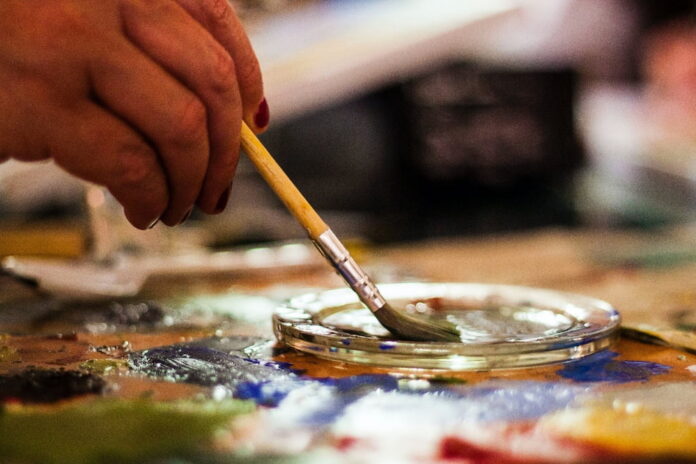Expressive arts therapy is an effective approach to mental wellness that encourages individuals to explore and express their emotions through art. This form of therapy incorporates various creative activities, such as painting, drawing, music, dance, and writing, to help individuals process and communicate their feelings. Mental wellness is essential for leading a happy and fulfilling life, and expressive arts therapy has been shown to support it effectively.
This article will explore ten tips for using expressive arts therapy to support mental wellness. From finding the right medium to building confidence, these tips will help you make the most out of your expressive arts therapy practice.
Tip 1: Find the Right Medium
Everyone has different preferences when it comes to art, so it’s important to find a medium you enjoy and feel comfortable with. Whether painting, drawing, or dancing, the right medium will allow you to express your emotions and fully connect with your inner self.
When exploring different mediums, it’s important to keep an open mind and be willing to try new things. Consider experimenting with various mediums until you find one that feels right for you. And remember, there’s no right or wrong way to express yourself through art.
Tip 2: Use Art as a Form of Self-Care
Art is an extraordinary form of self-care that encourages mental wellness, allowing you to take a break from the daily grind and foster personal growth. Whether painting, writing, or dancing, artistic expression can help you relieve stress and promote relaxation; use it to relax and unwind.
To use art as a self-care, consider setting aside dedicated time for creating. This can be done at home or as part of a group or individual therapy session. Ensure the environment is conducive to relaxation and you have all supplies. Making art a regular part of your self-care routine is a holistic approach to mental health, which helps you find a greater sense of inner peace.
Tip 3: Use Creativity to Problem-Solve
Another way to support mental wellness through expressive arts therapy is to use creativity for problem-solving. The creative process can help you approach problems from a new perspective and find solutions that may have been overlooked. By exploring different possibilities and experimenting with different approaches, you can find a solution that feels true to your needs.
To use creativity in problem-solving, try focusing on the problem at hand and then creating without any preconceived ideas. Let your creativity lead the way and see where it takes you. You may be surprised at the solutions that arise from this approach.
Tip 4: Encourage Personal Expression
Personal expression is a cornerstone of expressive arts therapy. It allows individuals to connect with their emotions and communicate their innermost feelings. By creating personal and meaningful art, individuals can gain a greater sense of self-awareness and self-acceptance.
Encouraging personal expression during expressive arts therapy requires creating a safe and supportive environment. This means allowing individuals to create without judgment and acknowledging the vulnerability that comes with expressing oneself. By creating this type of environment, individuals can feel more comfortable exploring and expressing their emotions through art.
Tip 5: Embrace Imperfection
Imperfection is a natural part of the creative process, and it’s important to embrace it during expressive arts therapy. Perfectionism can stifle creativity and prevent individuals from fully expressing themselves. By letting go of the need to create something perfect, individuals can focus on the process of creating and the emotional benefits that come with it.
To embrace imperfection, try focusing on the process of creating rather than the end result. Allow yourself to experiment and make mistakes, and try not to judge your work too harshly. By embracing imperfection, you can focus on the joy of creating and the emotional benefits that come with it.
Read Also
- Why the Keto Diet Works for Some People—and Fails Dramatically for Others: An Ayurvedic Breakdown for Modern HealthcareThe keto diet has dominated weight-loss culture for years. For some people, it produces rapid fat loss, stable energy, and improved mental clarity. For others—especially those who gain weight easily—it leads to burnout, digestive distress, rebound weight gain, high cholesterol, and a metabolism that feels slower than before. Healthcare often frames this as a discipline… Read more: Why the Keto Diet Works for Some People—and Fails Dramatically for Others: An Ayurvedic Breakdown for Modern Healthcare
- How to Choose the Best Assisted Living Facility for SeniorsAre you looking for the right assisted living facility for a senior loved one? Choosing a place can feel overwhelming. There are many factors to consider, from care services to the environment. Safety, comfort, and social opportunities play important roles in daily life. Each senior has unique needs and preferences that must be met. Understanding… Read more: How to Choose the Best Assisted Living Facility for Seniors
- Burn Smart, Not Hard; Shape Burn: Clean Protein for Weight ManagementYou want to feel light, strong, and confident. You don’t want crash diets or fake promises. You need a plan that works with your body, not against it. That’s where Shape Burn comes in. You can burn fat without losing strength. You can eat better and stay full. You can manage weight in a way… Read more: Burn Smart, Not Hard; Shape Burn: Clean Protein for Weight Management
- Creatine Basics: How Much Is 5g, How Much Water You Need, and Whether Pills or Powder Work BetterIf you’ve ever walked into a supplement aisle or scrolled through fitness TikTok, you’ve probably seen people talking about creatine — usually with a shaker bottle in hand and promises of better workouts and faster gains. And honestly? They’re not wrong. Creatine is one of the most researched and effective supplements for muscle strength, recovery,… Read more: Creatine Basics: How Much Is 5g, How Much Water You Need, and Whether Pills or Powder Work Better
- Understanding Breast Cancer in Men: Key Facts and SymptomsBreast cancer is often thought of as a disease that only affects women. However, men can develop it too. Although it is less common, early detection and awareness are important. Read on to learn key facts, symptoms, and ways men can take action to protect their health. How Common Is Breast Cancer in Men? Breast… Read more: Understanding Breast Cancer in Men: Key Facts and Symptoms
Tip 6: Practice Mindfulness
Mindfulness is an essential component of expressive arts therapy. Being present at the moment allows you to fully engage in the creative process and connect with your emotions. By focusing on your senses and the experience of creating, you can reduce stress and anxiety and increase your overall well-being.
There are many ways to practice mindfulness during expressive arts therapy. One effective technique is to focus on your breath while creating. You can also pay attention to the sensations in your body as you work or simply focus on the present moment and let go of any distracting thoughts. Whatever technique you choose, incorporating mindfulness into your expressive arts therapy practice can be a powerful tool for supporting mental wellness.
Tip 7: Join a Group
Joining a group for expressive arts therapy can be a powerful way to support mental wellness. Group therapy provides an opportunity to connect with others and gain new perspectives on your emotions and experiences. You can gain a greater sense of community and belonging by sharing your art and listening to others.
When choosing a group, finding one that aligns with your needs and goals is important. Consider the type of group you’re interested in, whether it’s a general expressive arts therapy group or one that focuses on a specific topic or issue. Make sure a qualified therapist leads the group and the environment is safe and supportive.
Tip 8: Use Art to Process Trauma
Expressive arts therapy can be an effective way to process trauma. By creating art that represents one’s emotions and experiences, individuals can gain a greater understanding of the trauma and begin to heal. Art provides a safe and non-judgmental way to explore difficult emotions and communicate one’s experience.
When using art to process trauma, it’s important to do so under the guidance of a qualified therapist. Trauma can be a sensitive topic, and it’s important to ensure you have the support you need. By working with a therapist, you can ensure that you’re using art in a safe and effective way.
Tip 9: Build Confidence
Expressive arts therapy can also be a powerful tool for building confidence. Individuals can gain a greater sense of self-esteem and self-worth by creating and sharing art. Creating art allows individuals to explore their strengths and capabilities and find a greater sense of purpose and meaning.
To use art to build confidence, focus on the process of creating and the emotional benefits that come with it. Don’t worry too much about the end result; instead, focus on the joy of creating and the sense of accomplishment that comes with it. By building your confidence through art, you can support your mental wellness and find greater self-awareness.
Tip 10: Find a Qualified Therapist
Finding a qualified therapist is essential when practicing expressive arts therapy, as they can provide guidance and support, ensuring that it is done safely and effectively. They can also help you navigate any emotional challenges during the creative process.
Consider their qualifications and experience with expressive arts therapy when looking for a therapist. Make sure that you feel comfortable and that they understand your needs and goals. Working with a qualified therapist can make the most out of your expressive arts therapy practice and support your mental wellness.
Conclusion
Expressive arts therapy is an effective approach to supporting mental wellness. By incorporating creativity and self-expression into therapy, individuals can gain greater self-awareness and emotional well-being. Whether you’re looking to build confidence, process trauma, or simply find a form of self-care, expressive arts therapy can be a powerful tool. Following the tips outlined in this article can make the most out of your expressive arts therapy practice and support your mental wellness.






